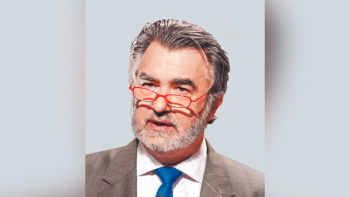
- Applied Clinical Trials-08-01-2023
- Volume 32
- Issue 7/8
Clinical Trial Feasibility Observations
Changing the expectations of the feasibility study can improve the process.
The most crucial step before clinical trial site selection is study feasibility, which acts as the basic pillar of the clinical trial. If this pillar is weak, the entire study can collapse. Today, feasibilities are mostly conducted with myopic vision of the trial in question. Feasibility surveys are extended to specific sites in the sponsor’s region of interest, a decision driven by second-hand information received from a sponsor’s medical sales team or past experiences of a sponsor or CRO working with a site. Most sponsors/CRO would define an ideal site as the one that:
- Has the first patient ready for inclusion right after site initiation visit
- Large patient population availability
- Has good data entry, documentation and reporting practice
- Has easily reachable site personnel and personnel backup
- Has the most efficient contractual procedure timelines
- Has the latest and updated equipment and facilities
- Has a prominent key opinion leader association
Most of the sites would tick all boxes for the list mentioned above. However, that does not ensure successful trial delivery. For example, for a psoriasis (mild to moderate) trial; on the surface every site that sees psoriasis patients would agree to participate. However, every protocol has nuances, particularly inclusion/exclusion criteria that were left out when feasibility survey was completed. This is why it is extremely important that the trial sponsors create the feasibility questionnaire instead of CROs. The questionnaire must be created when protocol is created and finalized when the protocol is finalized. Most sites do not receive the full protocol while conducting feasibility, which leads to a list of assumptions that are factually incorrect. CROs can support sponsors in conducting feasibility after the protocol is finalized.
80% of the sites reported generic questions in feasibility assessments that are not tailored for individual trial or Investigator. Whereas 76% of the sponsors have reported following discrepancies during feasibility leading to failed trials:1
- Overestimation of the study population available at the site
- Insufficient site personnel
- Inadequate interest and commitment from PI
- Contract or budget renegotiations
From the principal investigator’s perspective, their foremost concern is availability of the required active patient population at the top level of the funnel for a certain indication. The immediate next concern for a PI is the convenience for conducting the trial in question or site capabilities. Then, how much resources will the study require? Do they have several PK draws, do they need several areas from the facility to contribute to the study because not every site may not have all those.
What is important from sponsor/CROs view: they do not want to waste time conducting feasibility, site capability visits, and initiation, budget and contract negotiations only to find out that the site cannot recruit any patients. Sponsors weed out these sites by having semi-detailed questions in the feasibility. This is not just about getting patients, it is about implanting study protocol at the site and what the protocol requires.
Are research naive PIs being considered for trial feasibilities? Sponsors should consider these PIs. Supply and demand right now is in favor of research sites. The biggest challenge right now is to differentiate between the sites that have the ability to conduct a trial or the sites that are willing to conduct a trial. In a market where there is shortage of trial supply, sponsors can be pickier because they already know all the sites with a certain indication that will agree to do the study. However, the sites the sponsor may want to collaborate with may not agree to conduct the trial. They may be overwhelmed, not interested or have competing studies. Sponsors may not want key opinion leaders and specialist sites because if one sponsor wants them, chances are competitors have also approached them. They are going to be competing for patients as well as resources at the site.
Rakshinda Mujeeb, PharmD, research projects manager, Mediclinic Middle East
Reference
- Butryn, T, Cornejo, K, Wojda, T. R., Papadimos, T. J., Gerlach, A. T., Deb, L., Kramer C., &and Stawicki, S. P. (2016). Keys to success in clinical trials: A practical review. International Journal of Academic Medicine, 2(2), 203.
Articles in this issue
over 2 years ago
'Audit-proofing' Your Trialsover 2 years ago
More than Just Rules: Raising the Bar in GCP Adherenceover 2 years ago
Proposed ICH-GCP E6(R3) Guidance: Principles in Actionover 2 years ago
FDA Focuses Efforts on DHTover 2 years ago
eSource Interoperability Between EHR and EDCover 2 years ago
The First eCOA Forum Examines BYOD and Item Skippingover 2 years ago
FDA Inspections Face OverhaulNewsletter
Stay current in clinical research with Applied Clinical Trials, providing expert insights, regulatory updates, and practical strategies for successful clinical trial design and execution.




